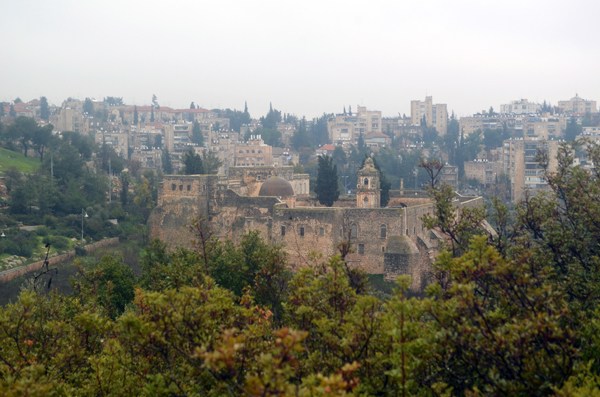
01.2016
An universal means for relating a contemporary building to its historic past is through the repetition of symbolic elements. Jerusalem stone (a number of local golden cream colored stones) is the required facing material for all buildings in the city, and often used for significant Jewish buildings in other parts of the world. Linking contemporary (Israeli) architecture to the Old City, and particularly to the remains of the Second temple wall can be seen as a strategy for demonstrating legitimacy through continuity to an earlier configuration of the urban space.
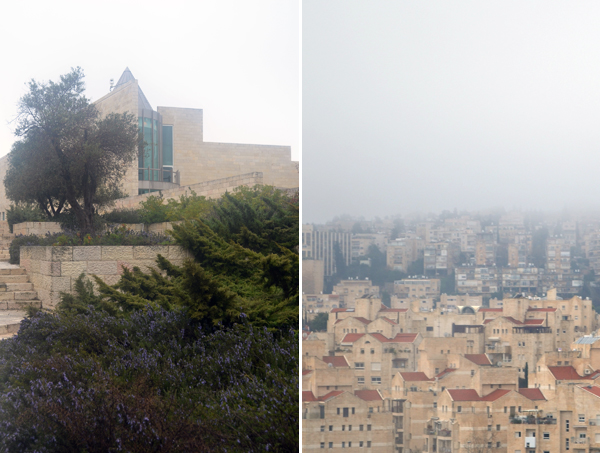
Supreme Court of Israel | Jerusalem hillside
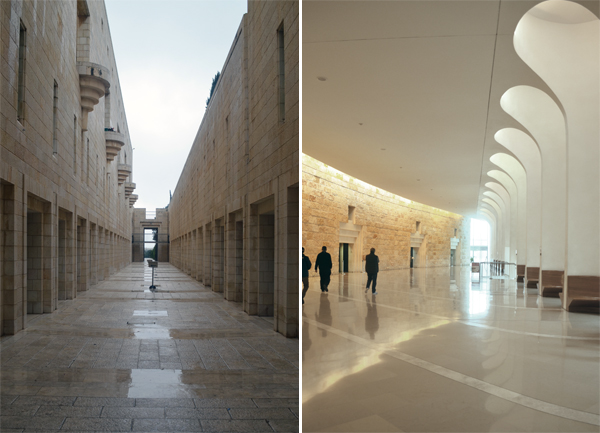
Knesset passage | Courtroom entryway at the Supreme Court of Israel
The unity of material is a large-scale symbol which happens to be eminently visible for the cityscape as a whole. In this case the architectural requirement can also be interpreted as a multiplication of the wall, both physically and materially. This is particularly effective in Jerusalem with its undulating topography that allows buildings to cascade down the mountainsides and layer their elevations, where every building adds to the entire composition.
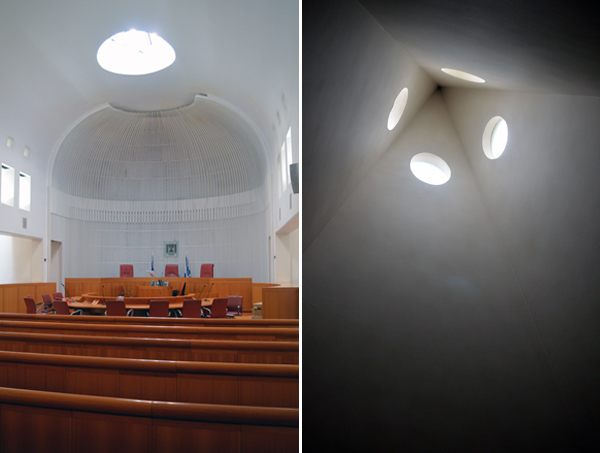
A courtroom | the pyramid at the Supreme Court of Israel
In the case of the Supreme Court building finished in 1995 by brother and sister architects Ram Karmi and Ada Karmi Melamede, symbols are particularly emphasized, from the competition stage through the current publicity materials [1]. It could be argued that the narrative created and its motifs echoed through procession, geometry, light etc. make the project more legible and appealing. Here too the idea and materiality of the wall is pronounced, not just on the exterior but through the wall element that runs continuously through and is always dominant in the experience of the building. One sees the wall, climbs parallel to it, and passes through it into the courtrooms.
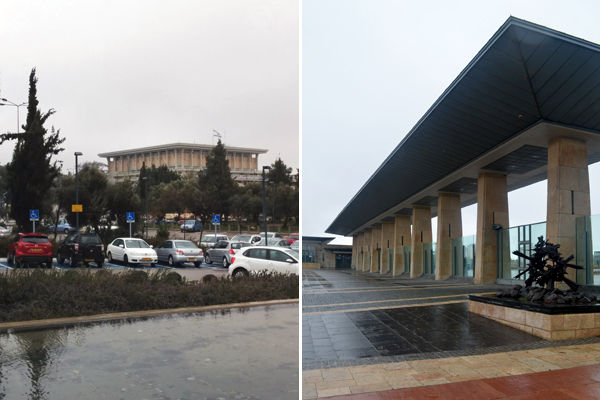
The Knesset, the Israeli Legislature
Symbolism is a narrative tool, as a reference to the past towards the creation of a future; the use of metaphor is a way to connect disparate moments throughout time. It references generally recognized meanings whether written or cultural in the past. It is a means of didactic narration, emphasizing to the public the significance of each move as relevant in the present. It ensures a place in the historic narrative of those in the future.
1. http://elyon1.court.gov.il/eng/siyur/index.html